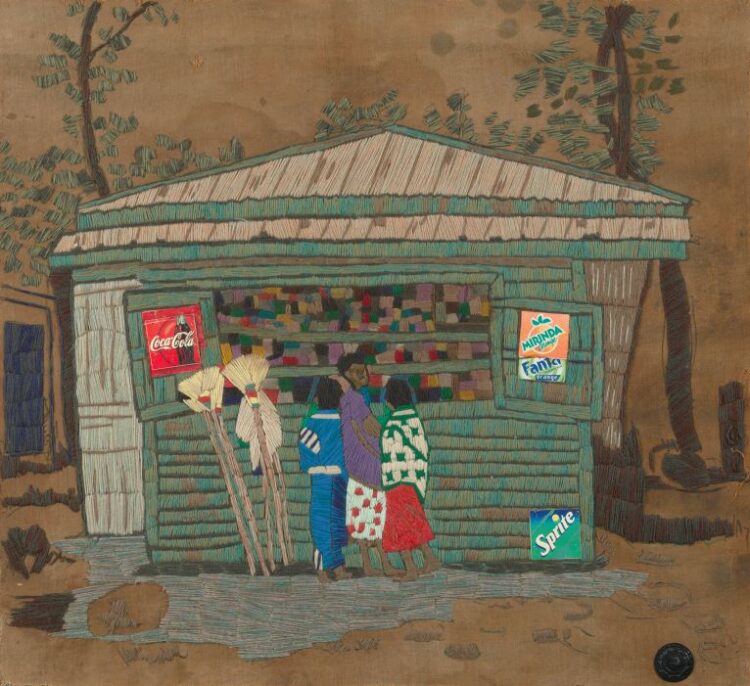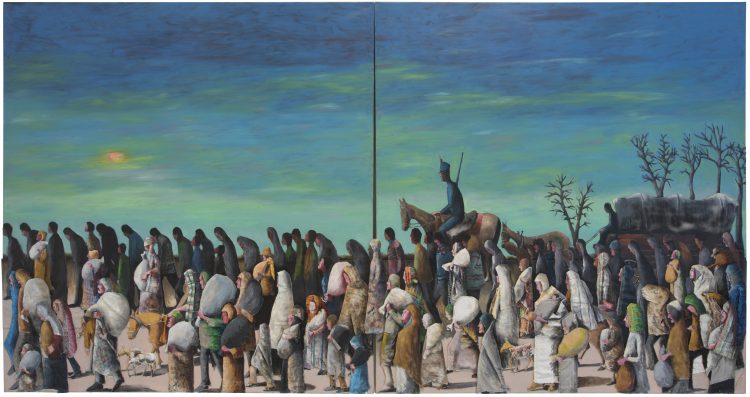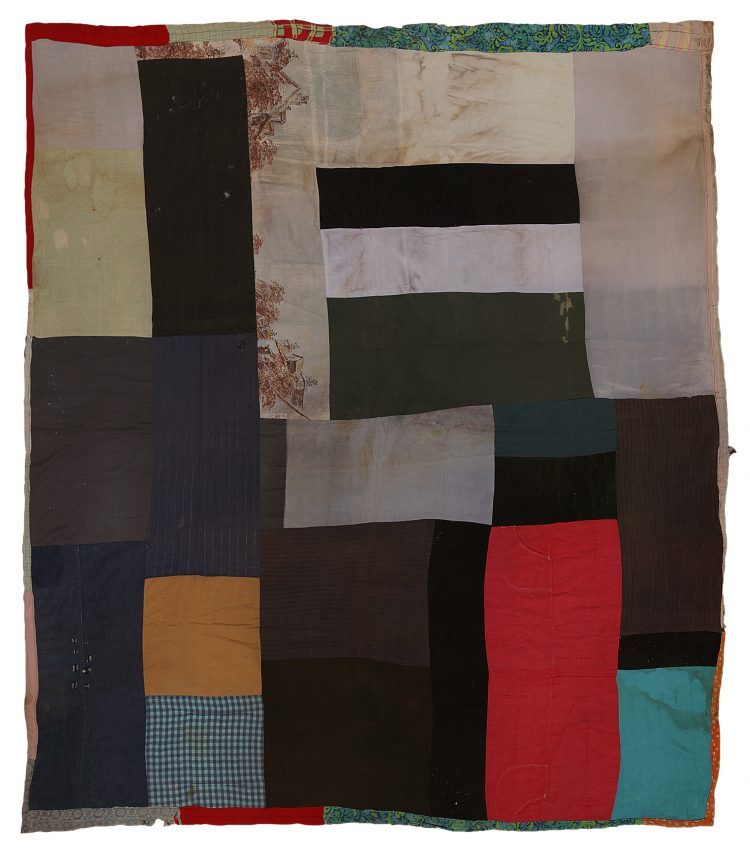Explore how artists in Pour, Tear, Carve: Material Possibilities in the Collection (on view through May 14) use various materials in different ways in their art, and how their choices convey meaning to their work.
Take a look at the works below that incorporate paper and consider:
- • Can you identify how paper is being used in each of these objects?
- • How have your lived experiences shaped how you view and think about the use of paper in these objects?
- • How will you see paper differently in the future?
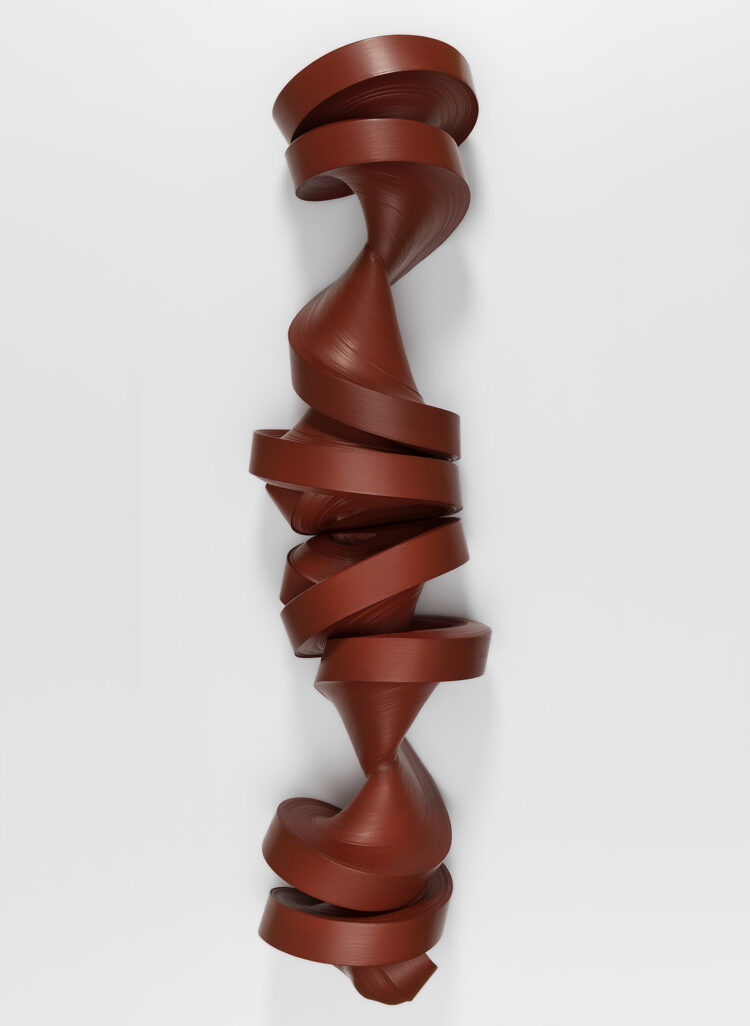
Jae Ko, Untitled (JK 719), 2012, Rolled paper, glue and calligraphy ink, 55 x 13 x 10 in., Gift of James A. and Marsha Perry Mateyka, 2022
Jae Ko, Untitled (JK 719), 2012
“I like working with this paper, twisting it until it could no longer be twisted.”–Jae Ko
Jae Ko manipulates paper into three-dimensional forms, creating painted sculptural bundles that spill and flow and wall and floor pieces that fold and stack. For Untitled (JK 719), Ko transformed commercial adding machine receipt paper, removing the plastic spools, and rewinding the paper into large coils that explore the energy trapped inside the dense layers. Curving and twisting the roll three times then securing the spiral form in two parts, Ko invents a dynamic sculpture that explores the possibility and power of paper. Ko initiated this series of work in the early 2000s after an inspired visit to Inyo National Forest in California to see the dramatic, windswept bristlecone pines.
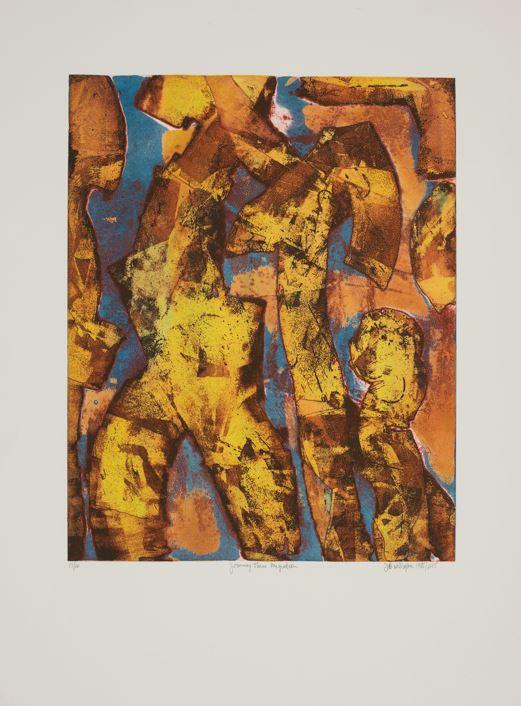
Joyce Wellman, Journey through Migration, 1985, Color viscosity etching, 22 x 16 in., Gift of the artist, 2022
Joyce Wellman, Journey through Migration, 1985
Through viscosity printing, which uses multiple colors of ink on a single plate, Wellman documents migration. Her abstracted print creates a contemporary complement to panels from Jacob Lawrence’s Migration Series (1940-41).
“I [wanted to] create work in the printmaking medium that became vehicles by which the viewer could journey through contemplative space. It has always been through abstraction that I have sought to express my feelings.”—Joyce Wellman

Marta Pérez García, Nameless 7, 2022, Colored abaca handmade paper, 56 x 14 x 10 in., The Phillips Collection, Purchase through the Gift of Robert and Barbara Liotta (through the Sidney and Nina Josephs Trust) in honor of Dorothy Kosinski, 2022
Marta Pérez García, Nameless 7, 2022
“They’re headless because it’s not one particular person. . . . I tried to give, in a way, visibility to the women who are not here anymore, but at the same time for us to see in these bodies our lives.”—Marta Pérez García
Marta Pérez García’s Nameless series, from which this hanging figure is drawn, was created in response to the increase in domestic violence during the COVID-19 lockdown, when many, particularly women and children, were forced to isolate with their abusers. Nameless 7 is made of handmade and colored abaca paper which the artist wet and shaped across the form, a commercial mannequin. According to Pérez García, “abaca does whatever—it fights back . . . there is the surprise of the materials; it has its own voice.”

